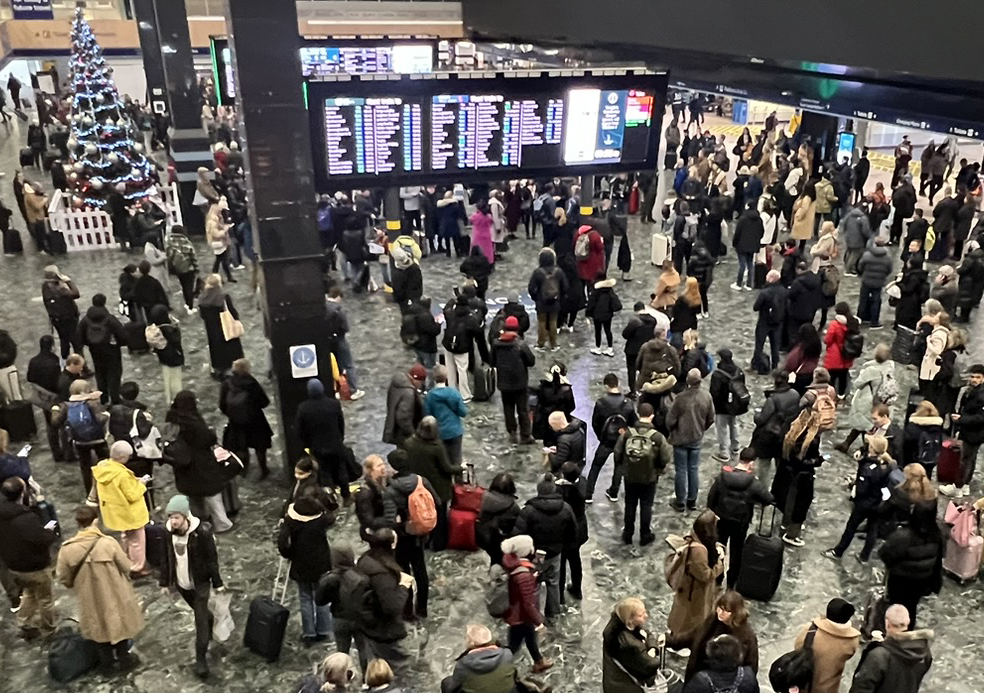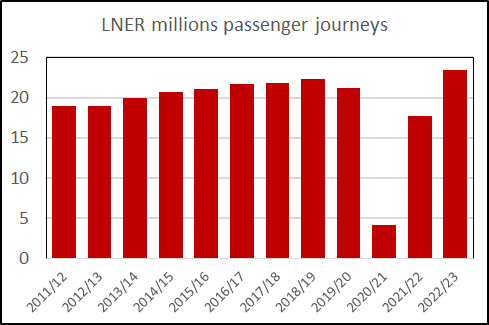In his statement to Parliament – ‘Zero-emission vehicles, drivers and HS2’ – Transport Minister Mark Harper explained the Network North plan. He explained that the £36 billion that was to be spent on HS2 phase 2 to Manchester is now to be spent on a wide range of activities. This includes diverse, largely undeveloped projects and non-capital expenditure such a capping bus fares and fixing potholes. It does not address key Northern rail capacity problems such as Leeds station and the Castlefield corridor.
This plan claims that what remains of HS2 will almost double the West Coast Main Line’s (WCML) capacity to 250,000 seats per day. This is not credible as it is equivalent to 18 x 589-seat Pendolino trains per hour, running 24 hours a day. When Rail Engineer asked how this figure was derived, the Department for Transport refused to provide an answer.
As we describe in our HS2 update feature, the reality is that phase one will greatly benefit Birmingham, with faster journeys and a huge increase rail capacity to London. As it offers nothing for Northern cities, this is the reverse of levelling-up.
Network North also states that an upgrade of Handsacre Junction will create more train paths. This is also untrue. This ‘upgrade’ merely prevents HS2 trains joining the WCML, further reducing the line’s capacity.
When Harper appeared before the Parliamentary Transport Committee (PTC), its chair asked about WCML capacity north of Handsacre. He wanted to know what is to be done to increase capacity following the cancellation of HS2 phase 2 as the line is now full. Harper seemed to consider that nothing needs be done as he did not accept that the line was full, nor would it be so for some time. He considered that the pandemic had driven people away from rail and they are not returning that fast.
Again, this view does not reflect reality. The WCML is one of Europe’s busiest mixed traffic rail corridors which many in the industry, such as the Rail Freight Group, consider to be full. A Network Rail study undertaken in February 2020 also reached this conclusion. In respect of long distance rail travel, ORR figures show that LNER passenger journeys in 2022/23 were 10% above the pre-pandemic figure.

Thus, the truth is that there is a very real WCML capacity problem north of Handsacre. Building HS2 phase 2a to Crewe would both resolve this and significantly increase the benefits of phase one with relatively little extra spend.
The above inaccuracies reflect the way Network North was hastily produced by a small number of Ministers and advisers. This contrasts with time and expertise taken to develop HS2 and the 1,300 of hours parliamentary time that scrutinised it. Furthermore, there was no consultation with key bodies such as Network Rail or the National Infrastructure Commission, whose role is to deliver expert advice on long term infrastructure challenges.
Harper advised Parliament that the Government “are backing Britain’s drivers and slamming the brakes on anti-car policies.” He told the PTC that 70% of the £36 billion savings from curtailing HS2 spend is now to be spent on roads and that prioritising roads in this way was very sensible. In contrast, the Welsh and Scottish governments have transport strategies which aim for a shift from car use to more sustainable transport modes.
Harper concluded his HS2 statement by advising that Network North (which includes Plymouth and Kent) is a new vision for transport. Yet this is a vision that fails to address critical rail capacity problems and lacks coherence. Hence, it cannot be an effective way of spending £36 billion unless the aim is to appeal to as many constituencies as possible.
RIA’s annual conference took place less than a month after the HS2 announcement. Clive Kessell was there to report on the mood of the conference and the key issues raised which includes uncertainty about future projects.
Midland Main Line (MML) electrification is currently being extended to just south of Leicester. Peter Stanton describes the various ways to ensure that this is being delivered in an affordable manner. However, as yet the full MML has yet to be authorised despite this being promised in the Integrated Rail Plan two years ago.

We also have two other electrification features: David Fenner explains how the overhead line equipment (OLE) upgrade at Royston was Network Rail’s first zero emissions renewals work, and Paul Darlington describes the new guidance note on managing mining risk during the installation of OLE piles and other construction work.
The project to re-open the Levenmouth branch is now almost complete. This includes timetable development which can be a key part of any enhancement project. On the basis of previous Scottish re-openings, this will transform the local economy. This is what railways do. Certainly, the Docklands Light Railway (DLR) was essential to the development of London’s docklands when it opened 35 years ago. We also explain what’s involved in introducing DLR’s new trains and keeping older trains running until they can be replaced.
Malcolm Dobell has been to Siemen’s Wildenrath test track in Germany to ride on the new London Underground (LU) Piccadilly line stock which will replace the current 1973 stock. His feature describes these trains and explains why they are the first LU units to have vehicles without wheels. He concludes with a stark warning of the consequences of not replacing the 1972 Bakerloo Line stock soon.
Low adhesion presents a significant risk for which there are various mitigation measures. We describe how the RAIB report into the Salisbury Tunnel Junction collision highlights the importance of compliance with these risk controls. The Petteril Bridge Junction derailment was a quite different low adhesion accident which shows the need to develop wagons that can detect non-rotating wheels.
Bob Hazel has been considering how the 15-inch gauge Romney, Hythe, and Dymchurch Railway and the standard-gauge North Norfolk Railway (NNR) heritage railways renew their track. On the NNR three turnouts and associated plain line track were renewed at a cost of £135,000 per turnout. Although not directly comparable, it is worth noting that this compares with around £1 million on mainline infrastructure.
In contrast we consider the renewal of signalling systems commissioned in the 1970s, 80s, and 90s and the extent to which digital signalling is the answer. As Christmas approaches, Rail Engineer hopes that our readers have a great time over the festive season. Our thoughts are also with those who will be working on track doing essential engineering work at this time.

